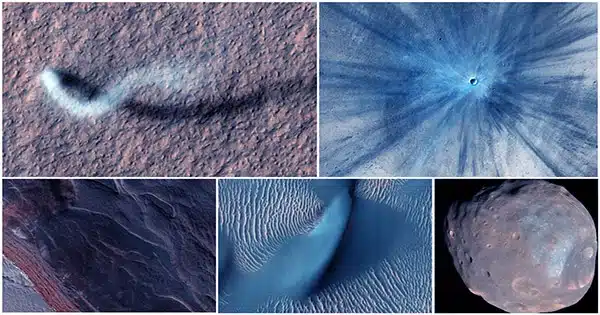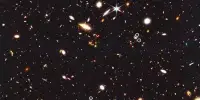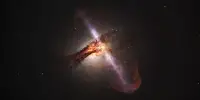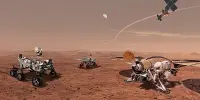Both academics and the general public can use a new global picture of Mars created at Caltech using data from NASA’s Mars Reconnaissance Orbiter.
A new mosaic of the Red Planet made of 110,000 pictures from NASA’s Mars Reconnaissance Orbiter captures cliffsides, impact craters, and dust devil trails in breathtaking detail. (MRO). The pictures, captured by the veteran spacecraft’s black-and-white Context Camera, or CTX, span nearly 270 square feet (25 square meters) of surface area per pixel.
As a result, the worldwide CTX Mosaic of Mars is the most detailed worldwide picture of the Red Planet ever produced. This 5.7 trillion pixel (or 5.7 terapixel) collage would encompass the Rose Bowl Stadium in Pasadena, California if printed out.
The collage took six years and tens of thousands of hours to create; it is the work of Caltech’s Bruce Murray Laboratory for Planetary Visualization. More than 120 peer-reviewed scientific articles have already referenced a test version because it is so comprehensive. But anyone can use the collage because it is so simple.

The project’s leader and Murray Lab manager, picture processing expert Jay Dickson, said, “I wanted something that would be accessible to everyone.” “This is currently usable by students. This is useful right now for my mother, who just turned 78. The objective is to lower obstacles for those who are engaged in Mars exploration.
The CTX camera is one of three onboard MRO, which is headed by NASA’s Jet Propulsion Laboratory in Southern California. The High-Resolution Imaging Science Experiment (HiRISE) camera, for example, produces color pictures of surface features as tiny as a dining room table. CTX, on the other hand, offers a wider perspective of the terrain surrounding those features, assisting scientists in understanding how they are linked. CTX’s capacity to record bigger areas of the landscape makes it particularly helpful for detecting impact craters on the surface. The Mars Color Imager (MARCI), which is headed by the same team that runs CTX, creates a daily global image of Mars weather at a much lower geographic resolution.
Mars up close and personal: CTX has been photographing Mars since MRO landed in 2006, and its pictures are an excellent beginning point for scientists when building a map of the planet. Mapmaking is a bit like looking for a needle in a haystack while also putting together a riddle. It involves downloading and sorting through a large collection of pictures to find those with the same lighting conditions and clear clouds.
Dickson created an algorithm to match images based on the characteristics they recorded in order to make the new mosaic. He stitched together the final 13,000 pictures that the algorithm couldn’t match manually.
Parts of Mars that had not yet been photographed by CTX when Dickson began working on this project or regions that were covered by clouds or dust are represented by the mosaic’s residual gaps.
JPL Mars expert Laura Kerber offered suggestions as the new mosaic took form. For a very long time, I’ve desired something like this, Kerber said. It serves scientific purposes in addition to being a lovely work of art.
Kerber recently used the picture to travel to her preferred location on Mars, Medusae Fossae, a dusty area roughly the size of Mongolia. Scientists are unclear how it originated; Kerber speculates that it could be a mound of ash from a neighboring volcano. She can zoom in and appreciate ancient river channels, now desiccated, meandering through the countryside with the press of a button on the CTX mosaic.
Users can also tour places like Olympus Mons, the highest volcano in the solar system, by importing topographic data from NASA’s Mars Global Surveyor mission, or travel to places like Gale Crater and Jezero Crater, locations being investigated by the Curiosity and Perseverance rovers. One of the mosaic’s best elements draws attention to impact craters that have left scars on the entire planet, enabling viewers to appreciate how damaged Mars is.
Rich Zurek of JPL, the mission’s project scientist, stated that for the past 17 years, MRO has been showing us Mars in a way that no one had ever seen it before. “This mosaic is an amazing new way to explore some of the imagery we’ve gathered,” the author said.















